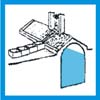GENERAL DEFINITION OF THE TECHNIQUE ROOFED CISTERNS: Difference between revisions
m (Text replacement - ""/imgcategory/" to ""http://oldtkwb.dev.esacor.com/imgcategory/") |
m (Text replacement - "http://tkwb.org" to "https://tkwb.org") |
||
| (One intermediate revision by the same user not shown) | |||
| Line 19: | Line 19: | ||
<tr> | <tr> | ||
<td> | <td> | ||
<img src=" | <img src="https://tkwb.org/imgcategory/C2b.jpg" style="padding: 10px; height: 120px;" /> | ||
</td> | </td> | ||
<td> | <td> | ||
| Line 65: | Line 65: | ||
</tr> | </tr> | ||
<tr style="height: 120px;"> | <tr style="height: 120px;"> | ||
<td style="background-color: #f9f9f9;" align="center"><img src=" | <td style="background-color: #f9f9f9;" align="center"><img src="https://tkwb.org/imgcategory/C2b.jpg" style="padding: 10px; height: 120px;" /></td> | ||
</tr> | </tr> | ||
<tr style="height: 40px;"> | <tr style="height: 40px;"> | ||
| Line 125: | Line 125: | ||
<table cellpadding="0" cellspacing="0" style="width: 100%; margin-top: 20px; background-color: #DBB497; text-align: center;" height="100"> | <table cellpadding="0" cellspacing="0" style="width: 100%; margin-top: 20px; background-color: #DBB497; text-align: center;" height="100"> | ||
<tr style="height: 100px;"> | <tr style="height: 100px;"> | ||
<td><img src=" | <td><img src="https://tkwb.org/imgcategory/ITKI.jpg" height="60" style="padding-right: 10px; cursor: pointer;" class="tkwb-enable-link" data-obj-link="ITKI" /><img src="/initcp/img/logo.png" height="60" style="padding-right: 10px; cursor: pointer;" class="tkwb-enable-link" data-obj-link="TKWB" /><img src="https://tkwb.org/imgcategory/sitti.jpg" height="60" class="tkwb-enable-link" data-obj-link="SITTI" /></td> | ||
</tr> | </tr> | ||
</table></td> | </table></td> | ||
Latest revision as of 11:12, 15 June 2023
| GENERAL DEFINITION OF THE TECHNIQUE | ||||||||||||||||||||||||||||
|
||||||||||||||||||||||||||||



